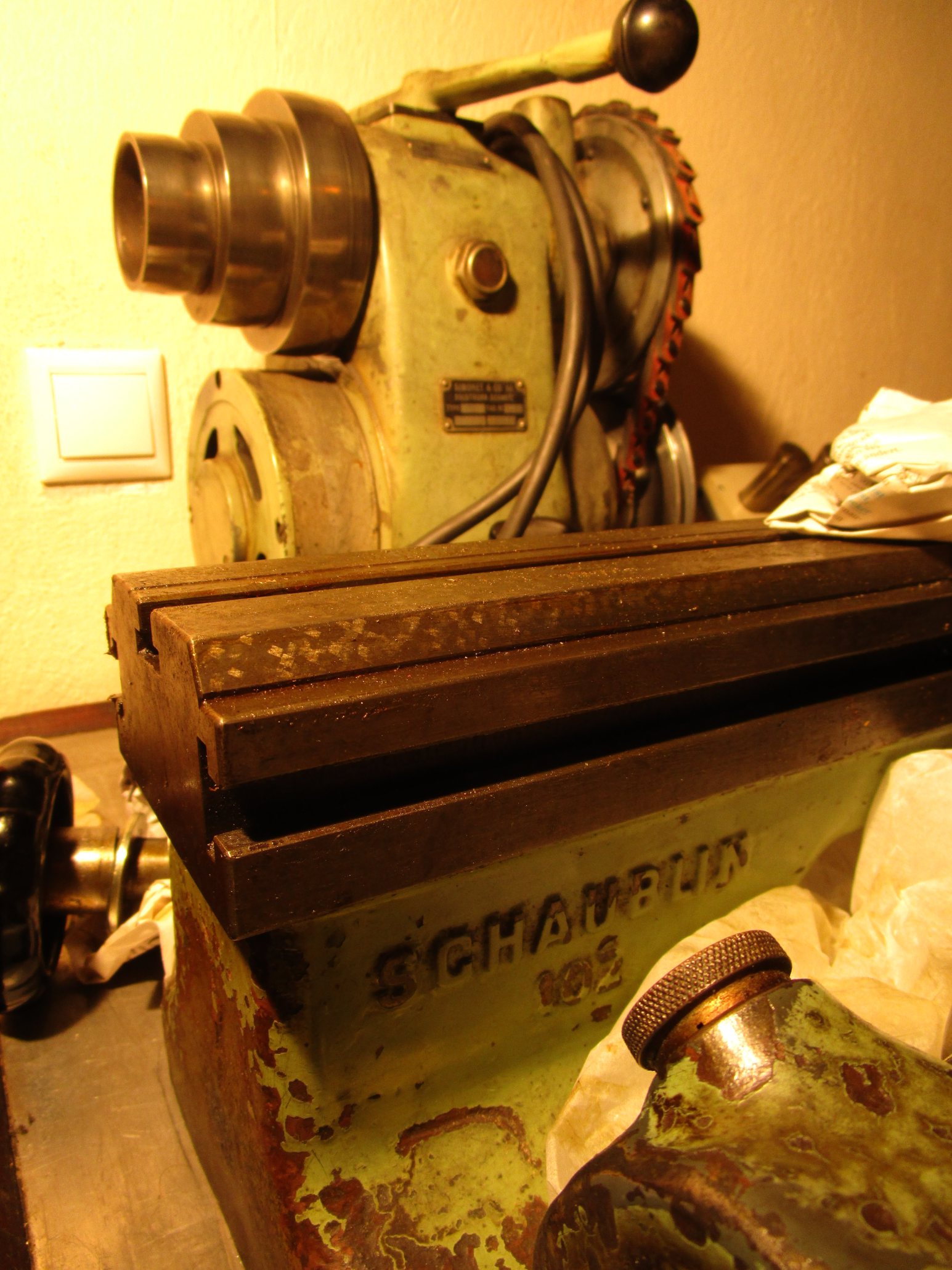
Schaublin 102 Swiss Precision Lathe Restoration
Back in 2016, J.I. Agnew restored a Schaublin 102 lathe. This is widely considered one of the most precise lathes in existence, manufactured in Switzerland by Schaublin, who specialize in precision machine tools and accessories.
This particular example was probably manufactured in the 1950's, and saw a lot of use. It came with a Simonet Type TV drive unit, another fine example of Swiss precision engineering. Simonet was another Swiss manufacturer of precision machine tools, including Simonet 102, a precision lathe very closely related to the Schaublin 102 lathe, with interchangeable parts. The bed ways of the two manufacturers were identically dimensioned, allowing the headstock, tailstock, compound slide and other accessories of one manufacturer to be fitted on a bed of the other.
As a result, it is not always easy to positively identify the headstock or tailstock. To illustrate this point, upon being sent photographs of this machine, Schaublin replied that they believe the headstock and tailstock were most likely not manufactured by them. Simonet did manufacture very similar units, but so did Schaublin, as their 1950's product catalogue revealed.
An investigation of the history of this lathe and discussing with its previous owner supported a higher likelihood of Schaublin manufacture. Regardless of who manufactured the individual parts, these lathes are indeed exceptionally well made and impressively precise. Upon inspecting a specimen of such fine mechanical engineering, an experienced lathe hand or engineer will undoubtedly recognize why these models are so highly sought after and command very high prices in the second-hand machine tool market.
This particular machine was accompanied by a W20 collet set, also of fine construction. The drive unit was fitted with a link belt on the V-pulleys and no flat belt. The lever on top is to select between high-speed, neutral and slow-speed on the countershaft unit internal gearing. The built-in motor is a three phase induction motor.
A Burnerd three-jaw scroll chuck was furnished to fit the headstock spindle thread.
The headstock consists of a very substantial casting, holding the bearings and rigidly supporting the hardened and ground spindle.
The cone pulley set is also quite substantial, with the small end pointing towards the nose. This was a common strategy on bench precision lathes, to allow the casting to be thicker towards the nose to provide a more solid support for the front bearing.
The end of the largest pulley functions as an index plate, with 4 rows of holes, arranged in different patterns. The index pin is engaged via the knurled knob next to the lubricator cap, which is also knurled.
The lubricator is of course intended for oil, not grease. You will damage your Schaublin if you try to run it with grease in the bearings. The same applies to all precision lathes. The lubrication specifications are quite exacting, and can be found in the manual.
The main problem on this machine was with the tailstock, which J. I. Agnew took apart and rebuilt.
The barrel is beautifully made, honed to perfection and sliding freely yet accurately in its bearings. The casting is of the old-fashioned design, having only a thin slot as a locking device. This is the least preferable way of locking the tailstock barrel, but in this case it works adequately.
The bronze nut was very worn out and revealed the only serious design flaw on this machine.
The pinned hole is far too close to the edge, which caused cracking after heavy use. The guiding fin was also worn, allowing an unacceptable degree of rotational play. The solution, however, is easy. A new bronze nut (or three) can be machined, which will restore the proper smooth operation of the tailstock for many more years of accurate work.
Ample lubrication upon reassembly along with a steady hand will ensure that everything will slide back into position without undue wear.
A period-correct flat leather belt was also made to specifications and instructions supplied by J. I. Agnew, whose intense research in the field of antique precision machine tools and general mechanical engineering expertise makes him a most useful resource for such information.
The completed Schaublin 102 was used to make parts for the restoration and modification of a Fairchild Model 199 disk recording lathe from the 1930's.
